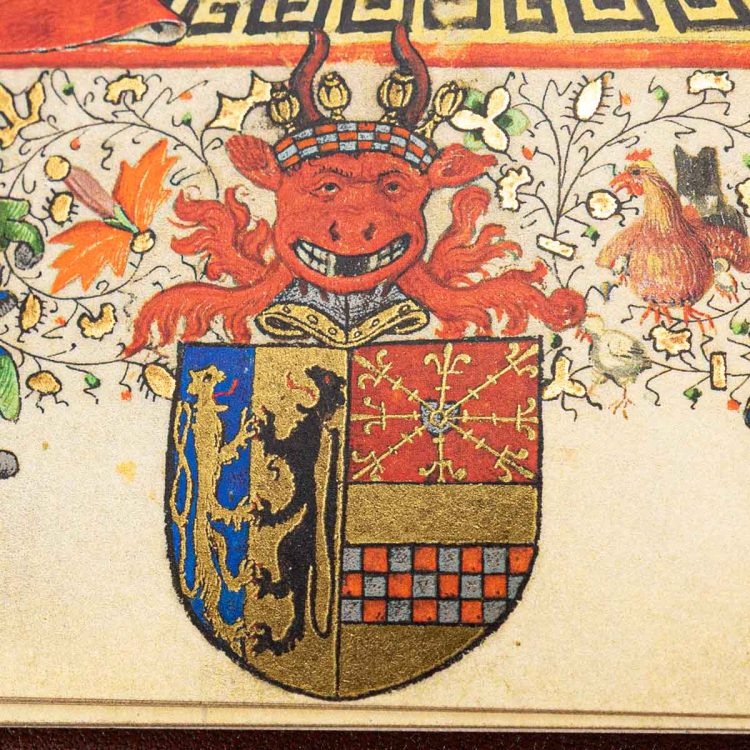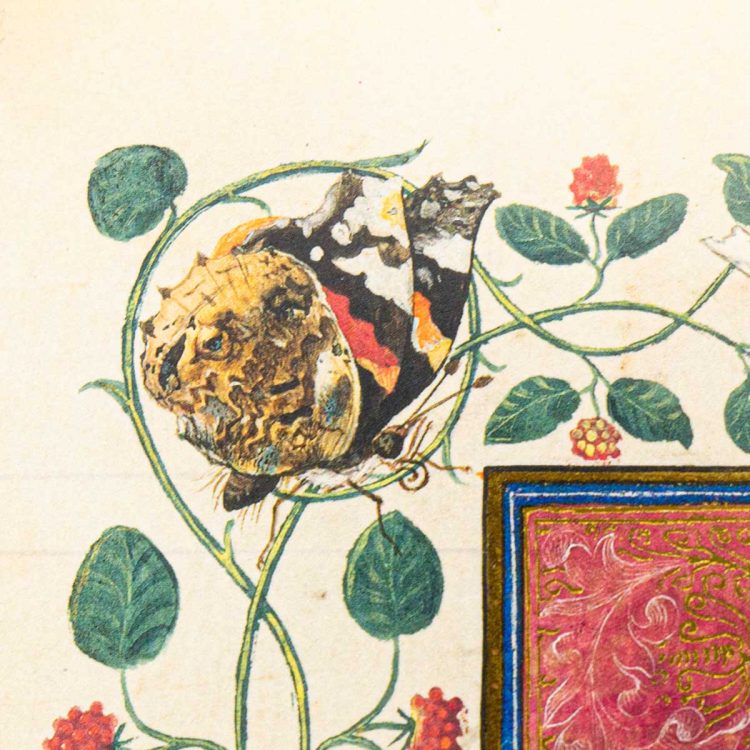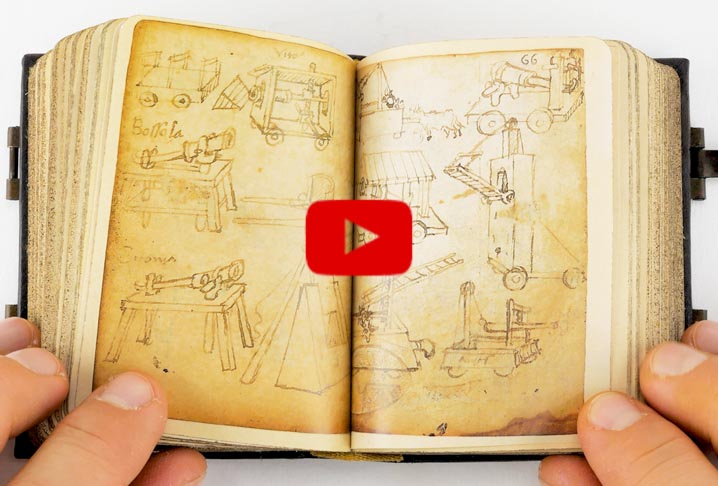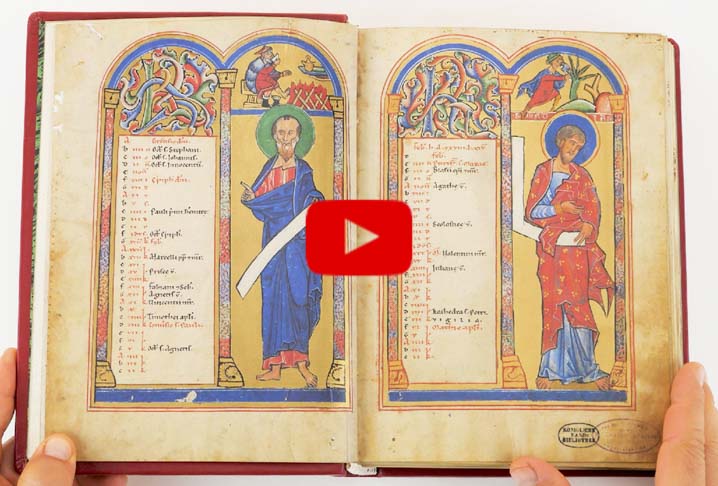An art scholar recently called it the rock star of medieval manuscript illumination. The story of this manuscript is so thrilling we couldn’t resist asking ourselves some questions — we also imagined the manuscript’s answers.
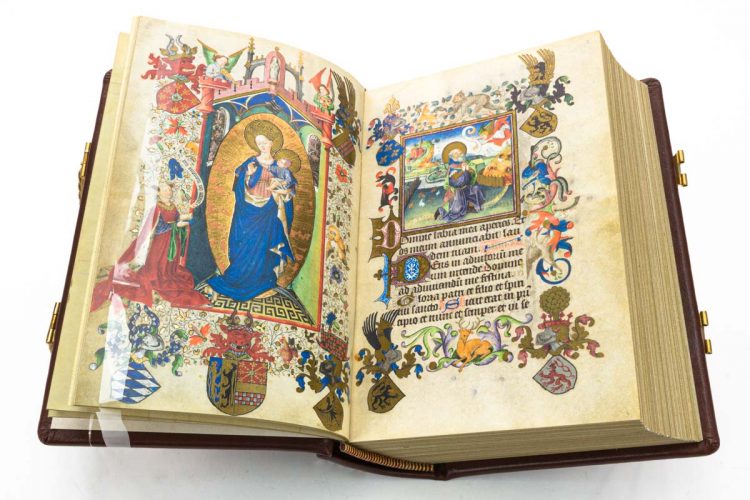
Hours of Catherine of Cleves, could you tell us how you were “born”?
A: Please, call me Kitty. That’s what they call me in my current home, at the Pierpoint Morgan Library in New York.
I cannot tell you a lot about how I was born, because I didn’t witness the process, of course, but I can tell you a lot about the two people I consider my mother and father: Catherine of Cleves, who wanted me so bad, and the illuminator who made me so, well, let me say it, perfect.
You see, Catherine was a really tough woman. I’m so proud of the way she stood up for her son, against the cruel Duke Arnold of Egmond, whom she had married — don’t ask me why!
In 1440, when the Master decorated my last folio, poor Catherine, who was only 23 years old, had already lost three of her children, and you know what her husband did? He disinherited their only living son! Catherine could not take it: she waged political war against her husband Arnold, with the support of three whole cities — Nijmegen, Zutphen, and Arnhem.
She wanted to distance herself from him with such force she even broke the rules of heraldry in my very first illustration: on the right are her coats of arms, Clèves and Mark, and on the left the ones of her husband Arnold.
But you know what she did? Instead of adding his crest at the top, as she should have done, she asked the Master to paint her father’s crest, that red ox head you see in this picture. That’s what we called a smack in the face in the 15th century. I’m so proud of her.
And what about the painter who decorated you?
Kitty: Lots of things have been said about him, that he predicted the great 17th-century Dutch painting, and that his images have their roots in the early Netherlandish painting, such as Jan van Eyck, but to me, he’ll always be the one who gave me 157 miniatures, and filled me with incredible detail, allowing me to bring Renaissance art to people of the 21st century. Not bad, right?
I don’t know if you know, but no two borders are alike inside my folios! They show the most incredible things: butterflies, fish, flowers, coins, crabs, mussels, birds and their cages, and even cookies and pretzels! Basically, an entire animal park and a bakery, in one book. Renaissance daily life in a nutshell.
What is your favorite border decoration?
Kitty: You couldn’t ask anything more difficult. Well, I adore the mussels, and the pretzels are fun, but my absolute favorite are probably the butterflies on page 252. Those insects hardly ever survive for more than two weeks, but my painter managed to make them eternal in a way. And he did the same with every other object inside me.
Do you enjoy life in the Morgan Library?
Kitty: Well, the Morgan Library staff literally brought me back to life in the 1970s, after a hundred years of despair, so how can I not adore this place? Let me explain: in the mid-nineteenth century, someone (whom I wish never to meet again) ripped me in half, shuffled all my leaves, and sold me as two separate books. I can’t believe people destroy things so easily.
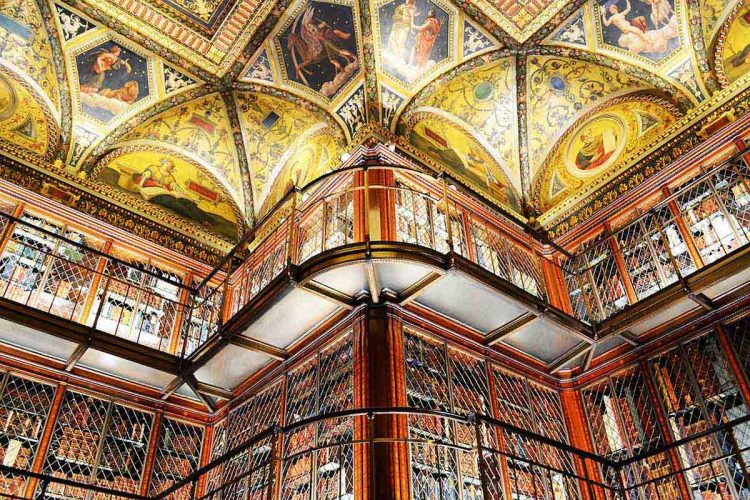
But apparently, the Virgin Mary brought my prayers to God, because after one long century, John Plummer, the Medieval and Renaissance Manuscripts curator of this fantastic library, compared my two halves and realized that they belong together! That was in the early sixties, and I had to wait years before my other half was offered for sale. In 1970, my new life began. I can tell you, it feels great to be in one place again! And now, you can even hear my voice in a funny place the library staff call their “website”.
Did you know that the Faksimile Verlag publishing house made a copy of you in 2009? How does that make you feel?
Kitty: Flattered, of course. Yes, I know about the facsimile editions — George Braziller published one as early as 1966. I agree with Elaine Treharne, a Professor at Stanford who believes that nothing can substitute the skin-to-skin contact between a manuscript and a human being.
When the curators of the library approach me, they take part in an embodied experience that literally takes them back in time.
But I’m an old book, and my leaves must be preserved as long as possible, and that would not happen if everyone could touch me! So welcome facsimile editions, because they are the closest people can get to me without damaging me.
What is really special about facsimiles is that, in them, I can finally be one. For example, I’ve heard that the Faksimile Verlag edition is an unabridged version of all my parts, which were once one. It really is a wonderful journey back in time. I’d love to meet the other me one day.
NEW WEEKLY VIDEOS
Find our more about the Sketchbook of Francesco di Giorgio Martini (Vatican City, Biblioteca Apostolica Vaticana, Urb. lat. 1757) on our website!
Find our more about the Landgrave Psalter (Stuttgart, Württembergische Landesbibliothek, HB II 24) on our website!





